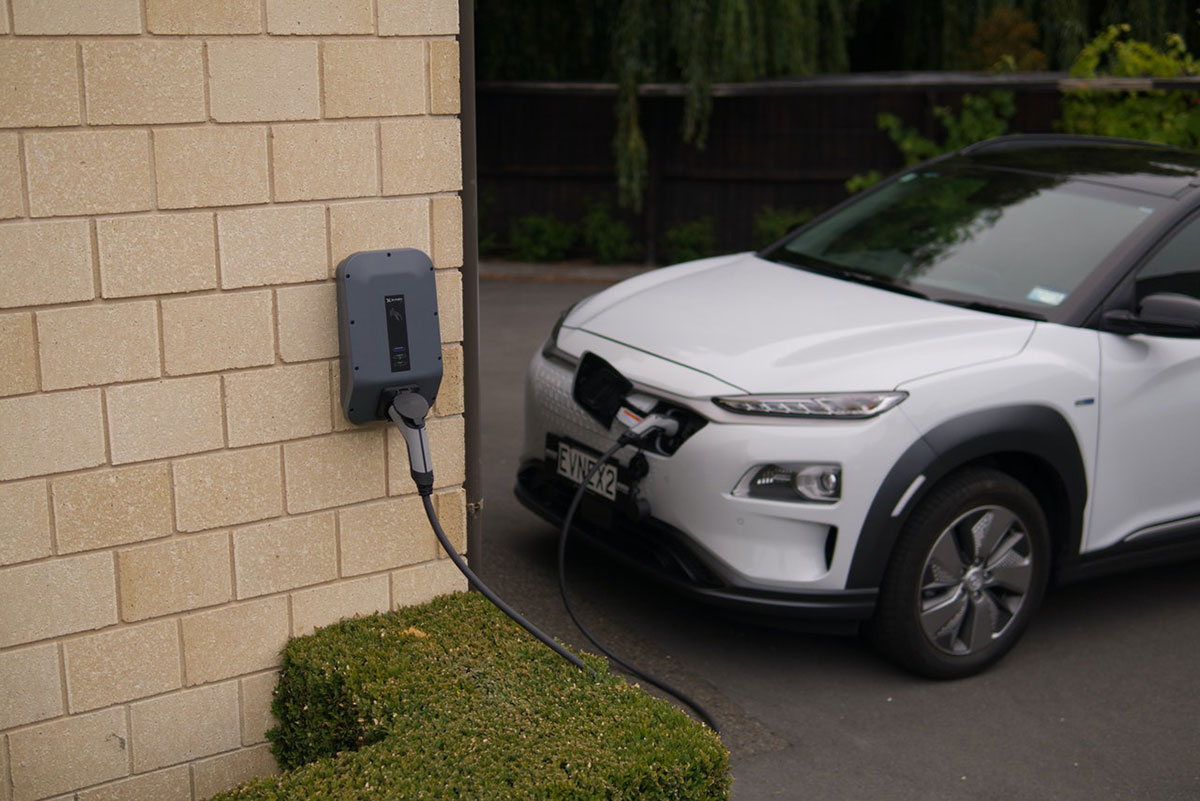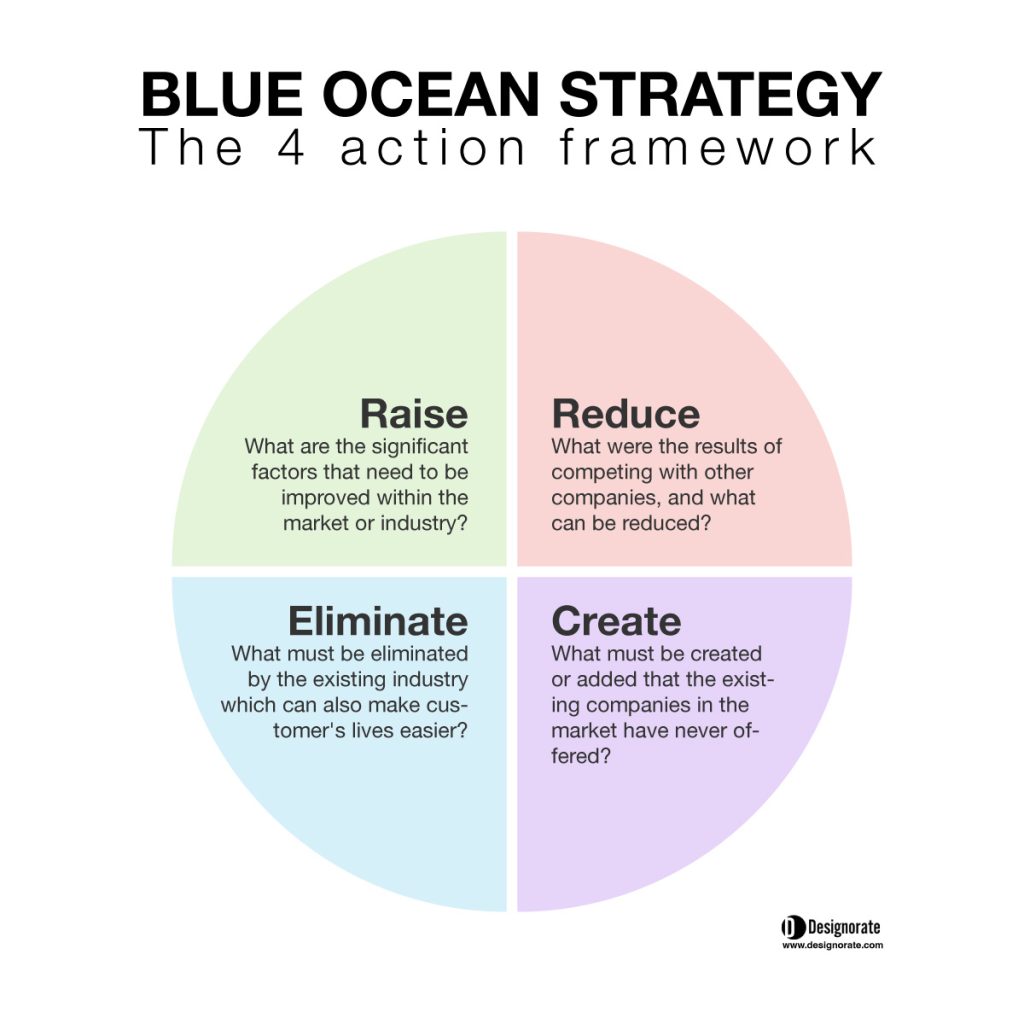The Blue Ocean Strategy: Guide and Examples
One of the biggest challenges that face today’s companies is market competency. The challenge factor is magnified for new companies as they try to find a value proposition that allows them to have a place in the market. As such companies have limited financial and human resources, these conditions leave them a limited window to penetrate the market. Various studies and practical case studies show that the only innovation is the solution for this complicated equation. Here, the Blue Ocean Strategy stands out as a strategy to achieve innovation.
In the previous article, Types of Innovation and How to Utilise Them, we explored the different types of innovation from size aspect (incremental, disruptive and breakthrough), place in the organisation (10 Dublin Types of Innovation) and nature (Open innovation and close innovation). These types can help companies to penetrate the market. However, this requires a broader strategy as we will explore in this article with different blue ocean strategy examples of innovation.
What is the Blue Ocean Strategy?
Professor Kim and Renee Mauborgne of INSEAD Business School developed the blue ocean strategy. They believed that creating a new market, the blue ocean shift is more beneficial than competing in an existing market. The blue ocean strategy was developed and implemented using various frameworks to look beyond the competition and reduce risks and hurdles in the newly created market through differentiation from existing markets. It provides an opportunity away from the existing red ocean of competition.
- Starbursting Technique: Evaluating New Ideas
- Report: Implementing Open Innovation to Drive Creativity Inside Companies
- Stage-Gate Process: Your Guide for Developing New Products

Most companies today adopts the strategy to achieve success in the market and create a product or a service that communicates the brand value and eliminates consumers’ pain points, which would get a better reach for the brand. Companies need to create an innovative product or service for an already existing industry that creates a new demand among customers and target audiences to stand ahead of the competition.
Why is the Blue Ocean Strategy Important?
Adopting the blue ocean strategy could be the perfect choice for all companies in a brand-new market. But it comes with multiple challenges and risks. Coming up with a new idea in a new market to achieve a profitable company can be tricky as there is no proven formula or strategy for it to work. Entering the market too early, bringing a different product, having the right strategy and moving in the right direction can be risky. The number of organisations that failed to use the blue ocean strategy is larger than the ones that succeeded.
Open Innovation can create value and significant benefits by making a product or service perform better and more convenient for the customer. For example, Apple focuses on innovation efforts that make it easier for customers by providing a seamless experience across all its products and services. With the right innovation and strategy, it gets easier to make the product perform better, more reliable and convenient for the customer.
As a way of innovation, the strategy allows companies to open up a new marketplace and create new demand. There is a huge demand and an excellent opportunity for growth in the blue ocean, making the business profitable.

Companies must adopt the with no competitors in a new market, improving growth. Adopting the blue ocean strategy creates a huge demand that evolves extensive growth with little to no competition in the market. The strategy is a vast and powerful tool for profitable growth in a business.
Blue Ocean Strategy and Innovation
Innovation is the factor of learning, market and entrepreneurial orientation. Companies can create better products or services to enhance their performance, revenue, profit, and market share than those with lesser practices or innovative methods(Applying the Value Proposition Canvas in Healthcare Technology). Most red ocean organisations fight for survival as bigger organisations consume the smaller ones, eventually innovating and creating value for both customers and the company to grow and survive in the market.
How to Apply the Blue Ocean Strategy?
The blue ocean approach requires the business owner to focus on the idea and perform a blue ocean strategy research to find something innovative and different that communicates the product or service’s value.
Most start-up founders come up with innovative ideas but need help finding a way to implement them into a product and make it look valuable for customers. The blue ocean strategy helps business founders build and turn their ideas into innovative and profitable companies (also check 5 Steps to Turn Your Creativity into a Successful Design Business).
Business owners must analyse various industries and sectors to identify trends and product demands. Analysing these industries lets them determine if customers or users are satisfied with existing services. Suppose there is a demand or requirement in the industry or market. In that case, it is essential to understand and put forward solutions for customers and figure out how to make it easier for the target audience.
What are the 4 Strategies of Blue Ocean Strategy?
In addition to the above video, we can follow the blue ocean strategy four action framework by Professor Chan Kim and Renee Mauborgne, which provides a systematic approach to apply the strategy,
- Raise: What are the significant factors that need to be improved within the market or industry?
- Reduce: What were the results of competing with other companies, and what can be reduced?
- Eliminate: What must be eliminated by the existing industry which can also make customer’s lives easier?
- Create: What must be created or added that the existing companies in the market have never offered?

The four-action blue ocean framework allows entrepreneurs or business owners to implement their strategy and make the shift to improve it for customers and help them improve their revenue. There are several tools that can help you achieve similar results like the above framework such as the SCAMPER technique and SWOT analysis allows you to explore market opportunities. The design process such as the Double Diamond design thinking can help you identify consumers’ unmet needs to transform to market opportunities. Another related model that focuses on consumer satisfaction is the Kano Model, check What is Kano Model Analysis? And How to Conduct it.
Blue Ocean Strategy Examples
Several companies have adopted the strategy. This application’s evidence appears in the companies’ offering, structure and business model (Download Our Free Business Model Canvas Template). Below are two examples of these companies: Netflix, iTunes and Airbnb:
Netflix
Netflix is a popular subscription-based streaming service provider and has started competing in the DVD rental and sales industry. With the blue ocean strategy, Netflix wanted to satisfy customers’ needs and began by making movies or films online and completely excluding sales at physical stores (What are the Types of Innovation? And How to Utilise Them).

Netflix made it comfortable for customers and provided a fantastic list of movies available online. They also created subscription-based monthly plans and an algorithm to understand users’ preferred movies and shows. Its main goal was to make movies available online so users do not have to leave their homes to buy or rent a DVD.
iTunes
Apple brought in a new market space for the music industry as it found millions of users using illegal music file sharing across the web during the late 1990s. It only got harder for the music industry to stop illegal digital music downloads.
With the fastest growing demand for MP3 players, Apple offered iTunes, which triggered customers to buy individual songs at a reasonable price. Apple offered various other benefits, like copyright protection to music companies, free downloading services, and amazing search and browsing functions. Today, iTunes has dominated the global digital music download market for over a decade, although there have been multiple competitors. Check (How Does Apple’s Design Process Work?).

Airbnb
Airbnb connects travellers and renters around the world with both affordability and value. Airbnb’s strategy includes process innovation where they don’t own any properties but provide customers and sellers with a platform through which they can serve both parties.

Airbnb’s only goal was to create amazing accommodations for their customers at the best possible price. With the blue ocean strategy, they created their market, eliminating the hassle of booking hotel rooms, quality of service, locations, inconvenience of finding the best suitable place, and multiple other issues customers faced. Airbnb created innovation in the hospitality and hotel industry, which never existed prior, which became successful and advantageous to hosts and travellers.
In addition to the examples above, the below two case studies highlight innovation in business:
- Co-Creation: Placing the Consumer in the Heart of the Open Innovation Process
- Exploring Human-Centered Innovation: NEST CASE STUDY
Conclusion
Based on the blue ocean strategy research, it is said that the blue ocean strategy is needed when supply exceeds demand in the industry or market. The strategy is complicated and doesn’t require companies to create new products but to provide a more reasonable and valuable service or product to the consumers that will, in turn, become a profitable business.
The blue ocean strategy follows an approach to develop sustainable and profitable frameworks and create an innovative market with brand-new customers. The strategy significantly impacts making a business successful, profitable and unique within the industry.






